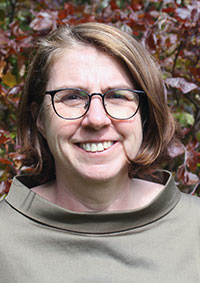05-MMG-SS2 Sedimentary Structures of Active Margins
Representative Katrin Huhn-Frehers
Based on fundamental geoscientific knowledge on subduction zones, we now focus on the interplay between tectonic, seismic activity and mass transport processes at active convergent margins. This module combines two main objectives: (1) to gain a deeper insight into mass transfer processes and their manifestations at active convergent margins and (2) to introduce numerical simulation techniques and to have the ability to develop numerical models for various mass transfer scenarios at continental margins.
1) Students have broadened and deepened their knowledge of deformation and mass transfer processes at convergent margins; mechanics and dynamics of forearc regions
2) Students are able to do a geotechnical characterization of marine sediments; lab techniques and interpretation
3) Students are familiarized with geophysical, particularly reflection seismic, data interpretation
4) Students are well introduced into and have gained an overview about numerical modelling techniques
basic knowledge of sedimentology and geophysics
Tutorial(s): -
Workload:56.0 h presence time
79.0 h self-study
45.0 h exam workload
180 h total workload
module exam
exam elements: 1
SL: 0
100 % written exam
1) Turcotte, D. L. & G. Schubert (2002): Geodynamics: Applications of Continuums Physics to Geological Problems. John Wiley and Sons, New York
2) Charles A. Nittrouer James A. Austin Michael E. Field Joseph H. Kravitz James P. M. Syvitski Patricia L. Wiberg (2007): Continental Margin Sedimentation: From Sediment Transport to Sequence Stratigraphy. ohn Wiley and Sons, New York
Basic Data
Master Marine Geosciences
Module Type
Compulsory
First Year of Study
Offering Departement
FB5 Geosciences
Sommersemester
Course LanguageEnglish
6 CP
4 SWS
Contact

Contact
Prof. Dr. Katrin Huhn-Frehers
MARUM2 3040
 marum.de
marum.deContact

Contact
Prof. Dr. Katrin Huhn-Frehers
MARUM2 3040
 marum.de
marum.de
